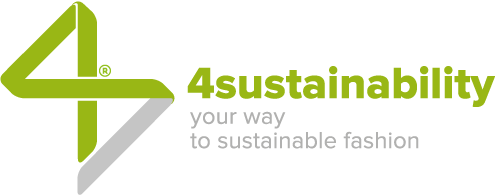Among the chemicals traditionally used in fashion production processes, PFAS or PFCs are often in the dock. Reducing the use of PFASs and other hazardous chemicals is not trivial, however, because it subjects companies to the continual search for the best possible trade-off between performance and sustainability. Important support comes from implementation protocols such as CHEM 4sustainability aimed at implementing a responsible Chemical Management system which also is aligned with best global methodologies such as ZDHC.
PFAS – also known by the old acronym PFCs – have been used for years as Durable Water Repellent (DWR) and that is, treatments for outdoor clothing, equipment and footwear that can repel water by waterproofing materials.
- Science proposes their elimination for a number of objective reasons. Here are a few.
- PFAS persist in the environment longer than any other man-made substance, dispersing through both water and air.
- Their release causes contamination of groundwater and consequently drinking water, and conventional water purification techniques are often ineffective.
- Some PFASs accumulate in living organisms and concentrations increase as we move up the food chain (biomagnification process).
- PFAS bind to proteins, “storing” in the blood or organs such as the liver.
The advantage and together the limitation of these poly- and per-fluorinated compounds, in essence, is the extreme strength of the alloy between carbon and fluorine that characterizes them and makes them effectively non-degradable. Because of their chemical structure, in other words, PFASs accumulate in the environment making contamination almost irreversible. What is more serious is that they enter the food chain with serious effects on human health, including
- Increased cholesterol levels
- Compromise of the immune system
- Increased risk of cancer
- Disruption of thyroid hormone
- Decreased effects of vaccination
- Impacts on weight of unborn children
Brands’ commitment on PFAS
The fashion response has been to fall back on shorter-structure compounds such as C6s, which are less persistent but still dangerous. We mention first and foremost the outdoor clothing companies that make extensive use of long structure PFASs, the most tenacious.
More responsible is the choice of those who are trying to abandon the use of PFAS altogether, investing time and resources in developing alternative materials and techniques. This is the case of Patagonia, a well-known American sports and outdoor clothing company, which has publicly committed to eliminating these compounds from its supply chain, communicating the progress it has made and also inviting consumers to support the change through more conscious purchasing behaviors.
The brand informs that waterproof garments for which a DWR treatment is not crucial – about 90% of the total – are already produced without the use of PFAS. That leaves 10% for which there is still no alternative solution, nothing at least that guarantees the performance which is essential for some specific sportswear. Patagonia correctly gives evidence of this, citing ongoing research to develop lower impact treatments.
Performance vs Sustainability
Dangers come not only from PFAS, of course. Every outfit we wear, every pair of shoes, every fashion accessory … is produced with extensive use of chemicals, which are not always harmless or sustainable. We have already mentioned the processes for waterproofing materials. But chemistry is also used to achieve color fastness or perform a long series of treatments.
Phthalates, for example, are used to give flexibility and softness to rubberized prints: in the long run, however, they can disrupt the body’s hormone balance when in contact with the skin. Chlorine – used to “bind” a great many dyes – and chromium, which is used to fix the color on the fabric, are known carcinogens. Formaldehyde is an eye and respiratory irritant gas used to fix pigments in the printing stage and also as a preservative in the packaging stage. Also strongly allergenic is nickel: watch out for dark or heavily colored jeans and garments because they are likely to contain significant amounts of it!
Do we ever stop to think, as consumers, about the consequences of the massive use of these substances? How much do factory discharges impact the sea we fish in or the rivers from which we draw water to irrigate our fields? And what damage does eating food from these fields cause to our health?
Regulations raise the bar on accountability
In recent years, regulatory authorities have been active on sustainable chemistry as never before, having as its primary goal the protection of human health, the environment and biodiversity. Let us cite, as an example, the 2021-2024 plan of the EPA – Environmental Protection Agency, the U.S. federal agency for the protection of the environment and human health, which gives mandatory directions for:
- Investing in research and innovation to increase understanding of PFAS exposures and toxicity to human health and the environment, thus developing effective countermeasures and solutions.
- Pursuing a comprehensive and proactive approach suitable for preventing PFAS penetration levels in air, soil, and water from negatively impacting human health and the environment.
- Deepening and accelerate PFAS decontamination to protect human health and environmental ecosystems.
- Eliminating PFAS from all products by 2030.
Other initiatives aimed at totally eliminating PFAS from products and production processes:
- On Jan. 13, 2023, authorities from Denmark, Germany, the Netherlands, Norway and Sweden submitted a proposal to ECHA, the European Chemicals Agency, to ban the entire PFAS class of chemicals, with the ban taking effect between 2026 and 2027.
- A group of more than 40 NGOs urged EU countries to ban PFAS in products such as food packaging, cosmetics and clothing by 2025 and in absolute terms by 2030.
- Canada already bans the production, use, sale and import of PFOS (specific subgroups of PFAS, ed.) and PFOS-containing products.
- Japan bans the import of several products containing PFOA-related substances, another type of PFAS. The list includes various textile products with water and oil repellent properties, water and oil repellent coating agents, and so on.
A responsible Chemical Management system
The self-conscious cynicism for which the fashion system has been responsible in the past is slowly but surely giving way to sustainability policies that often see brands and supply chains working together on shared goals. Among these is good chemistry, which involves the elimination of chemicals hazardous to health and the environment from the fashion industry’s production cycles. Those same substances that have been used extensively over the past fifty years because they are inexpensive and high performing.
On this front, the major global initiative is Zero Discharge of Hazardous Chemicals (ZDHC), a working table that later became a Foundation joined by the major international fashion & luxury brands, the most advanced companies in the supply chain, chemical manufacturers, analytical laboratories, research organizations, associations and companies such as Process Factory that specialize in supporting the process of converting companies to good chemistry.
CHEM 4sustainability protocol
The case of Patagonia tells us how complex this process is to achieve with one’s own forces alone, due often to lack of knowledge, method, tools… This is the basis for the 4s CHEM protocol, the original core of the multidimensional 4sustainability implementation and assurance system that supports the transition to sustainability of fashion supply chain. The dimensions involved, in addition to chemistry, are all those identified by the Global Fashion Agenda as priorities for sustainable development.
4s CHEM, more precisely, supports the creation of a chemical management system along the entire processing chain aimed at eliminating hazardous chemicals from production cycles through the ZDHC methodology and by referring to its MRSL. The acronym stands for Manufacturing Restricted Substances List, a list of chemicals restricted in use precisely because of their hazardousness. PFASs also belong to this list.
Companies that adopt 4s CHEM commit among other things to eliminate the direct use of such substances, opting for chemicals that exclude the intentional use of substances included in the MRSL. The methodology applied includes supplier qualification procedures, in-company training activities, review of production processes, replacement of chemicals in production inventories and recipes, and measurement of wastewater to assess the level of sustainability of production processes and their impact on human health and the environment.
“It is a structured and credible way to demonstrate to the market one’s commitment to environmental impact reduction,” stresses Francesca Rulli, CEO of Process Factory and creator of the 4sustainability framework. “There are so many companies that are achieving compelling performance through the 4s CHEM protocol, contributing to groundwater cleanup and ecosystem protection in a concrete, measurable and verified way. The 4s Companies section of the 4sustainability website shows a wide selection of them, pointing to the activation of the other initiatives of the system as well, which is based – I want to reiterate – on recognized global methodologies for reducing impacts through a local and collaborative approach.
Replacing hazardous chemicals with more sustainable alternatives enables excellent paths of process and product innovation, contributing to the formation of critical thinking geared toward building a better future.”

